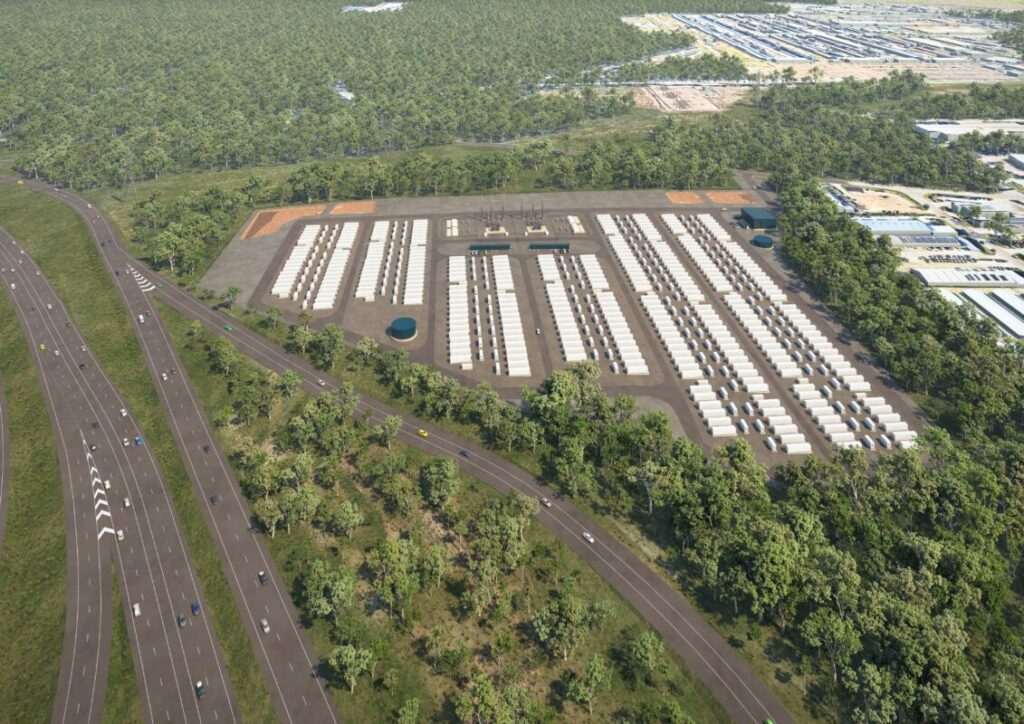
Three large-scale battery energy storage systems (BESS) with combined capacity of 720MW have been submitted for federal environmental assessment under Australia’s Environment Protection and Biodiversity Conservation (EPBC) Act.
The projects are on the opposite ends of the country, with two in New South Wales (NSW) and one in Western Australia, ranging from a 400MW/800MWh system in the Upper Hunter region of NSW to a 150MW facility south of Perth in Western Australia.
Each development faces distinct environmental considerations as developers navigate federal approval processes alongside existing state planning frameworks, with vegetation clearing requirements varying substantially based on site selection and existing land use patterns.
The EPBC Act assessment process will evaluate each project’s potential impacts on matters of national environmental significance, including threatened species and ecological communities.
Enjoy 12 months of exclusive analysis
- Regular insight and analysis of the industry’s biggest developments
- In-depth interviews with the industry’s leading figures
- Annual digital subscription to the PV Tech Power journal
- Discounts on Solar Media’s portfolio of events, in-person and virtual
The referral process requires detailed documentation of potential environmental impacts and proposed mitigation measures before construction can commence.
400MW Aberdeen BESS proposed in New South Wales Upper Hunter
The largest project, the Upper Hunter Battery Energy Storage System near Aberdeen in New South Wales, proposes a 400MW/800MWh lithium-ion BESS capable of providing up to two hours of energy storage. The BESS is being proposed within the Upper Hunter and Muswellbrook Shire in the suburb of Aberdeen.
The Upper Hunter project, which was originally developed by Maizewood before being acquired by North Harbour Clean Energy in July 2024, requires a disturbance footprint ranging from 31.35 to 35.62 hectares from a total project area of 118 hectares.
The development necessitates native vegetation clearing and includes switching station options with transmission line connections to existing grid infrastructure. The project has progressed through New South Wales’ state planning processes, with the Department of Planning and Environment issuing updated Secretary’s Environmental Assessment Requirements in July 2025, which have an expiration date of September 2026.
The Aberdeen facility’s environmental assessment commenced in August 2023, when Maizewood submitted a scoping report and request for the Secretary’s Environmental Assessment Requirements to the New South Wales Department of Planning and Environment.
The department issued initial SEARs in September 2023, followed by the updated requirements in July 2025, indicating the project’s progression through state-level planning processes.
The project’s location in the Upper Hunter region positions it within an area of existing energy infrastructure, including coal-fired power stations and transmission networks.
Meanwhile, the facility’s 2-hour duration capability aligns with grid-scale storage requirements for renewable energy firming and peak demand management in the National Electricity Market (NEM).
Native vegetation clearing represents the primary environmental consideration for the Aberdeen project, with the disturbance footprint comprising approximately 27-30% of the total project area.
The variation in disturbance footprint reflects different configuration options under consideration, with final clearing requirements dependent on detailed design and environmental assessment outcomes.
TagEnergy Australia proposes 150MW system south of Perth
In Western Australia, TagEnergy Australia’s subsidiary, Paterson Battery, has referred a 150MW battery system for federal assessment. The Paterson project, situated approximately 80km south of Perth, will occupy five hectares of predominantly cleared and degraded agricultural land.
The Western Australian facility will be connected to the existing Pinjarra substation via underground 33kV cable infrastructure, requiring minimal vegetation clearing due to the site’s agricultural history and its degraded condition.
The EPBC referral arises from potential impacts on the habitat of the threatened Black Cockatoo, a species of parrot. However, the assessment documentation indicates that significant impacts are not expected, given the degraded nature of the site and its limited habitat value.
The Paterson development demonstrates strategic site selection on previously disturbed land to minimise environmental impacts while maintaining grid connectivity. The underground cable connection approach reduces visual impact and infrastructure requirements compared to overhead transmission options, with the connection route utilising existing disturbed corridors where possible.
The project’s location, south of Perth, positions it within Western Australia’s South West Interconnected System (SWIS), the state’s main electricity grid serving the Perth metropolitan area and its surrounding regions.
Additionally, the 150MW capacity provides substantial grid support services to the isolated Western Australian electricity market, which operates independently of the NEM.
AGL Energy advances 170MW project with existing consent
AGL Energy subsidiary Beresfield BESS has submitted the third project, an approximately 170MW/340MWh system adjacent to the existing Ausgrid Beresfield Substation in New South Wales.
The project already holds State Significant Development consent under state planning legislation, which distinguishes its regulatory position from that of other developments still progressing through state approval processes.
The Beresfield facility will occupy 4.3 hectares with a disturbance footprint of 3.92 hectares, including only 0.15 hectares of native vegetation. Construction is expected to span 10 months, with the system designed for a 20-year operational life.
Grid connection will require up to 200 metres of 132kV sub-transmission lines to connect with the adjacent Ausgrid infrastructure.
The project’s proximity to existing electrical infrastructure at the Ausgrid 132kV substation minimises both environmental impact and connection complexity. The brownfield location adjacent to operational grid assets represents an efficient approach to battery deployment, as it reduces transmission requirements and land use impacts compared to greenfield developments.
AGL’s Beresfield project benefits from its industrial location and minimal impact on native vegetation, with only 0.15 hectares of the 3.92-hectare disturbance footprint affecting native vegetation communities. The facility’s design incorporates battery storage containers, electrical inverters, and a project substation, including high-voltage transformer infrastructure.
The 170MW/340MWh configuration provides approximately 2-hours of storage duration, aligning with grid-scale applications for frequency regulation, peak shaving, and renewable energy firming services.
This article has been amended from the original version, which put the combined capacity at 820MW, not 720MW.





